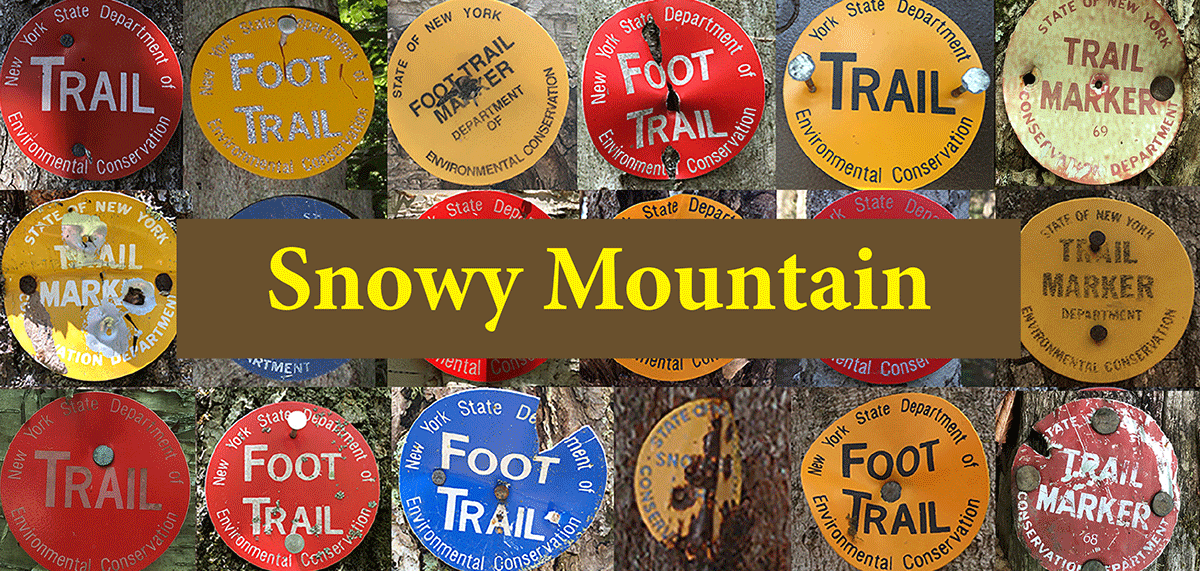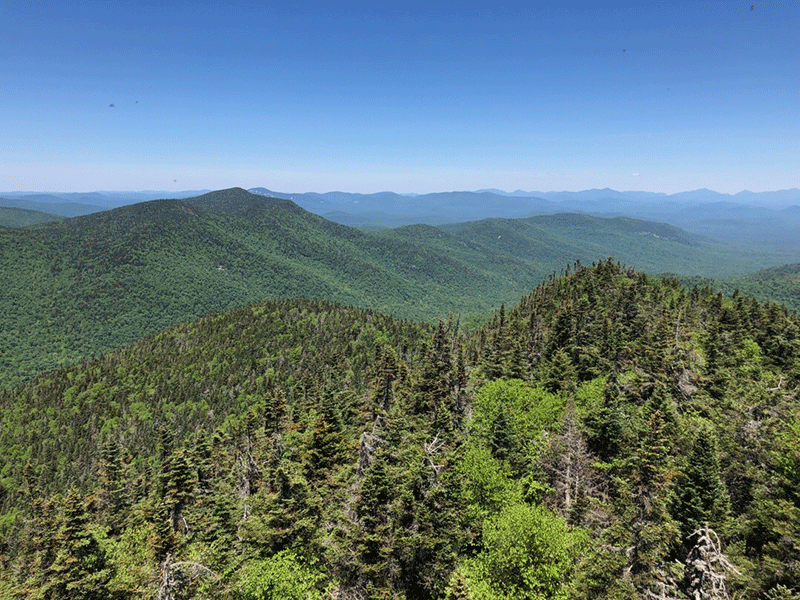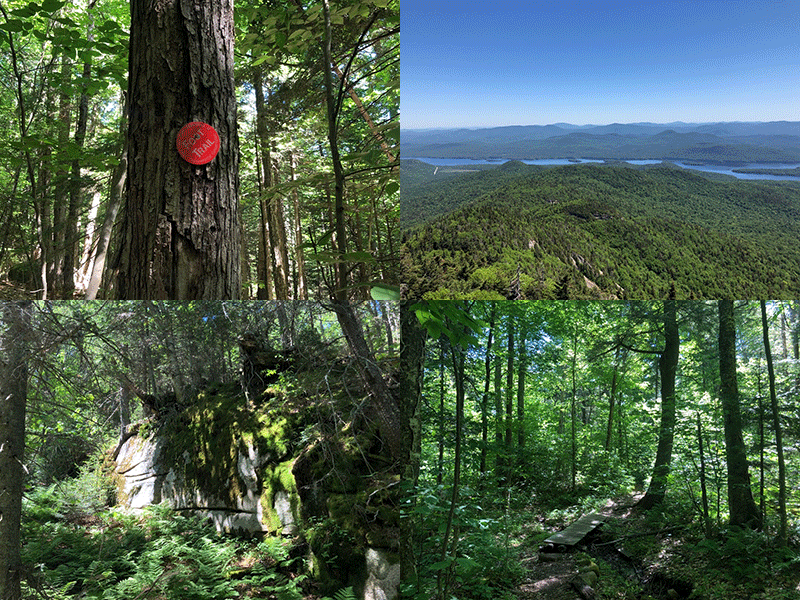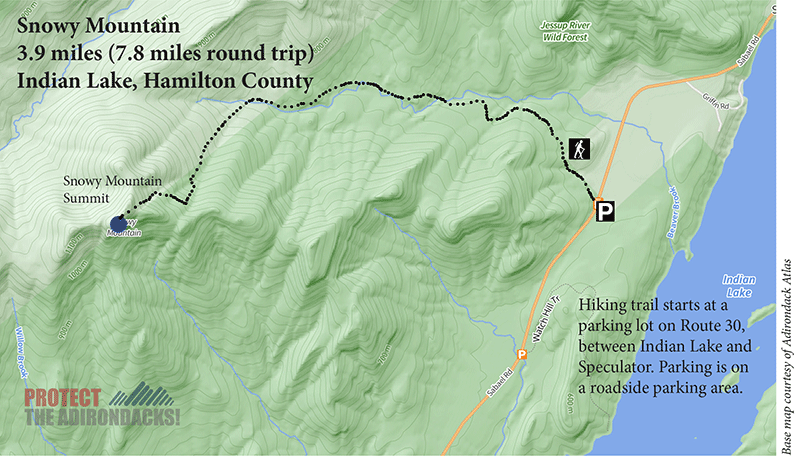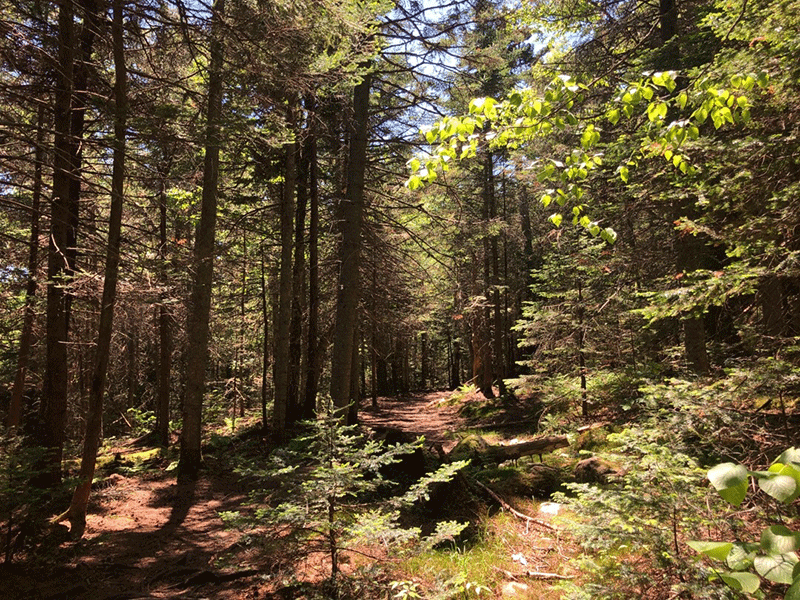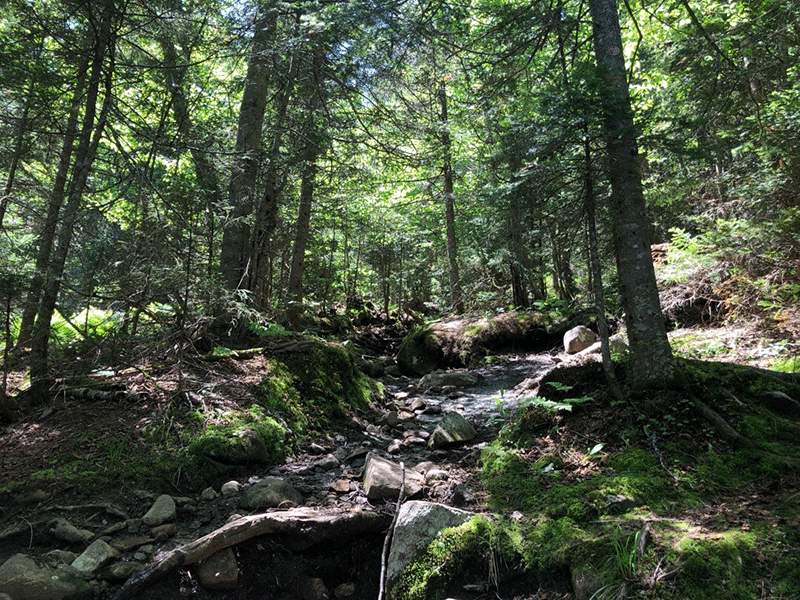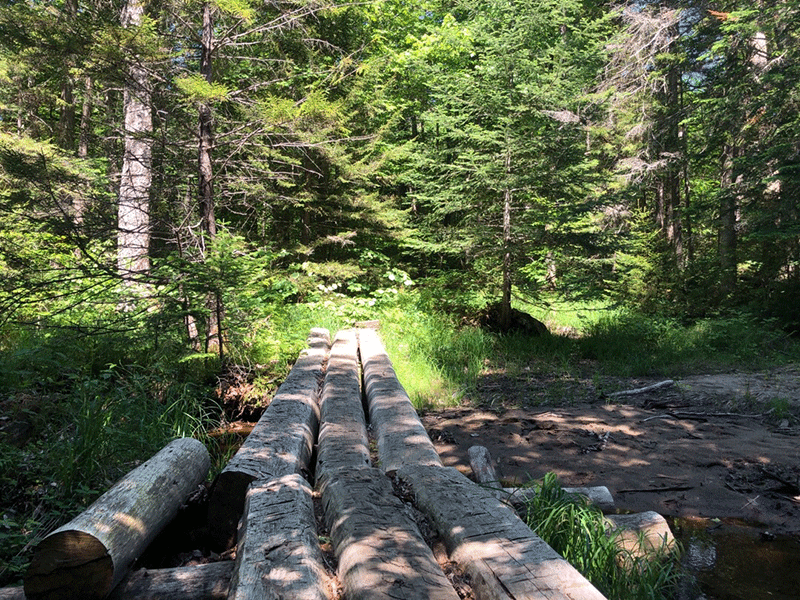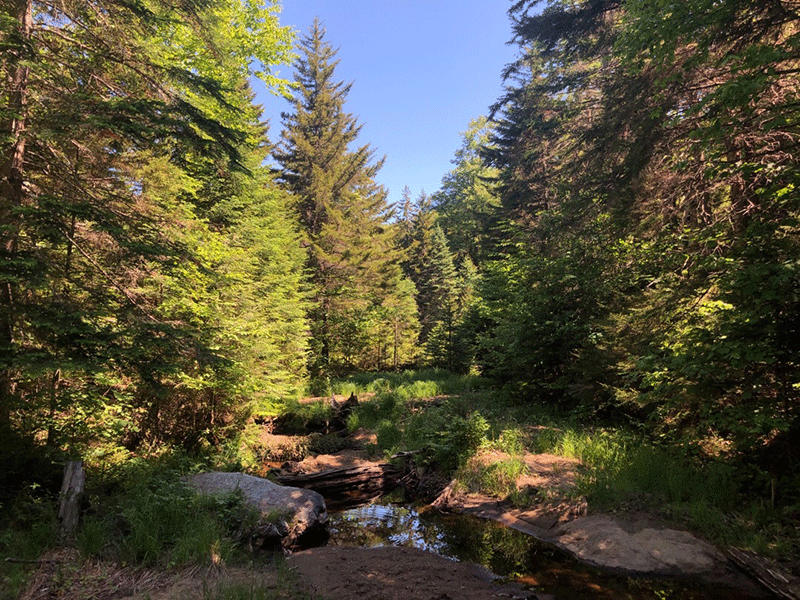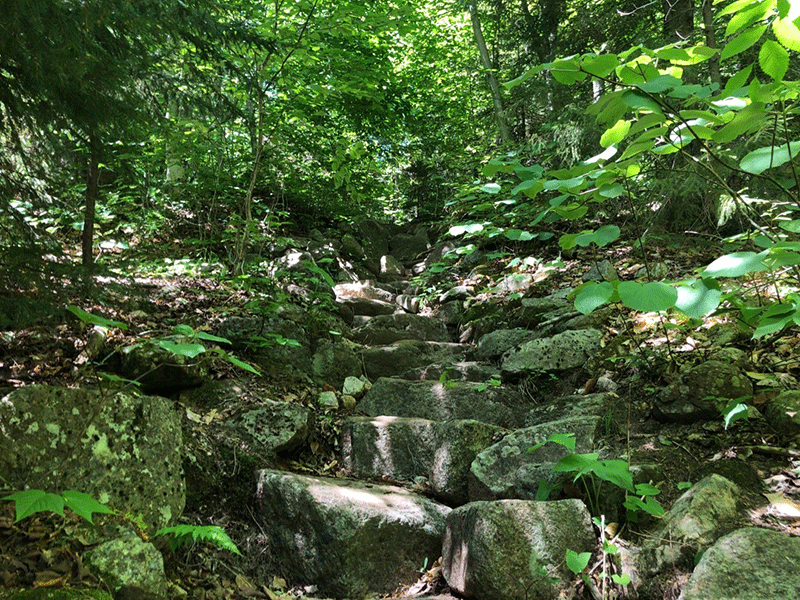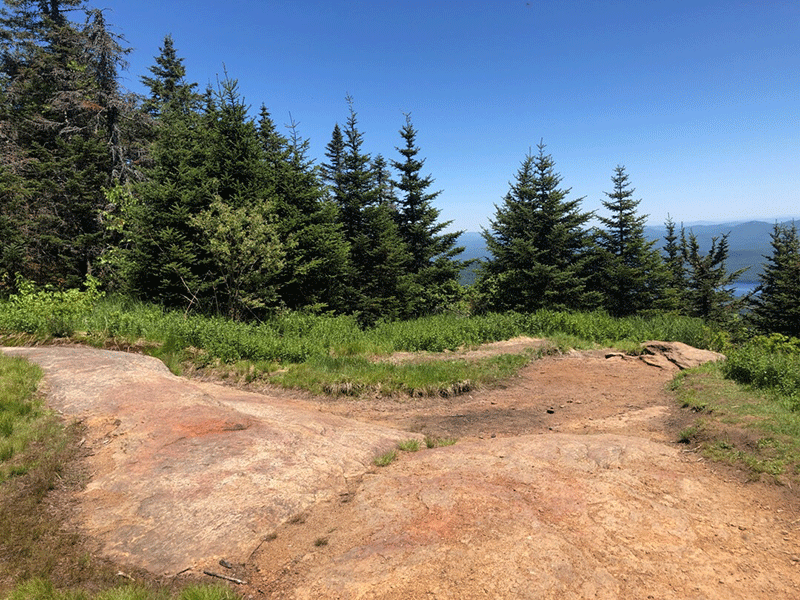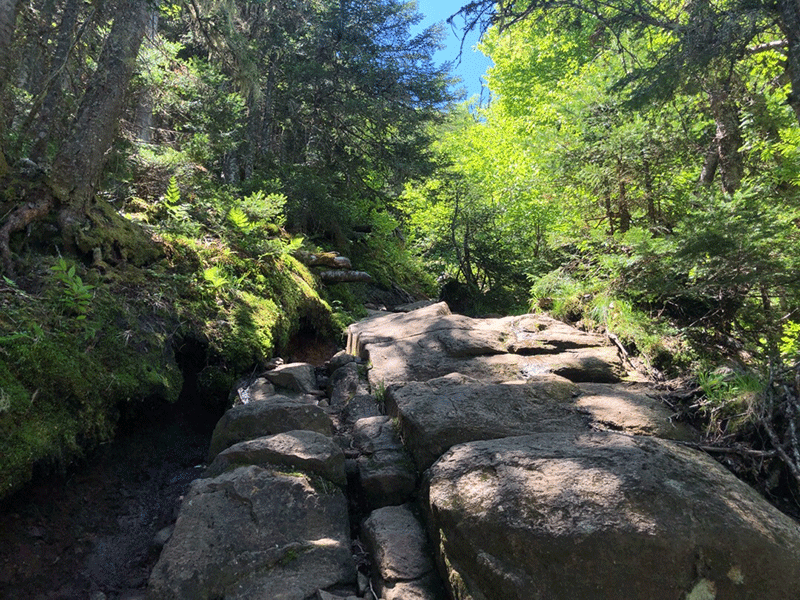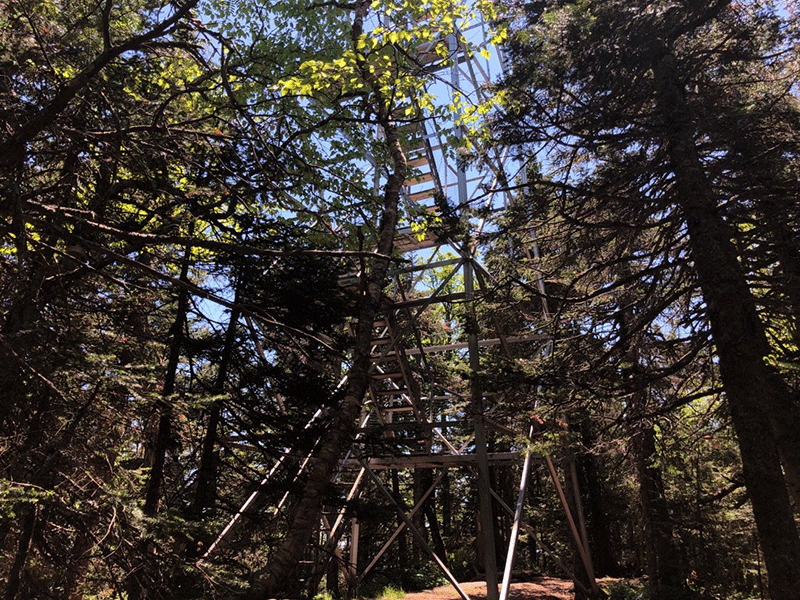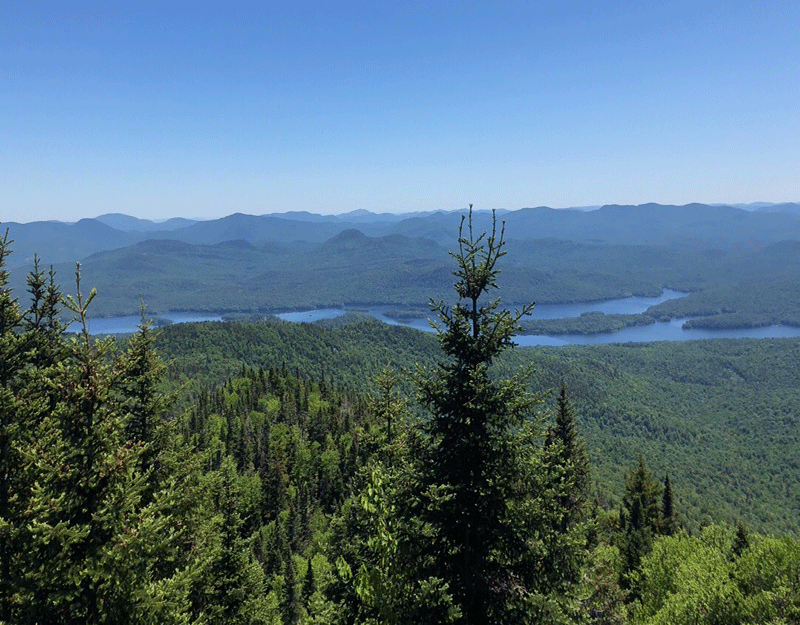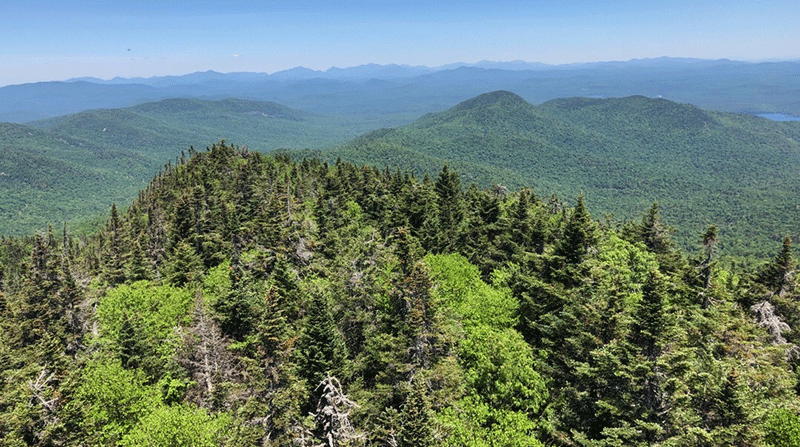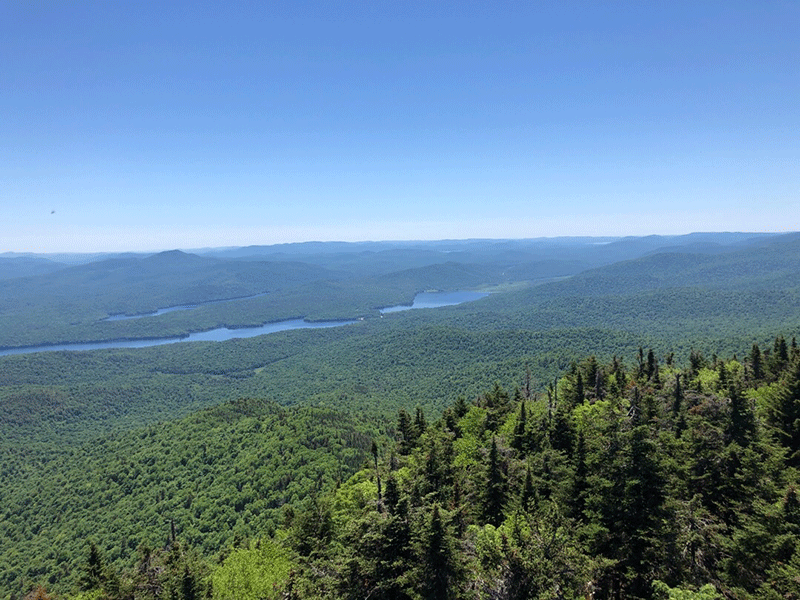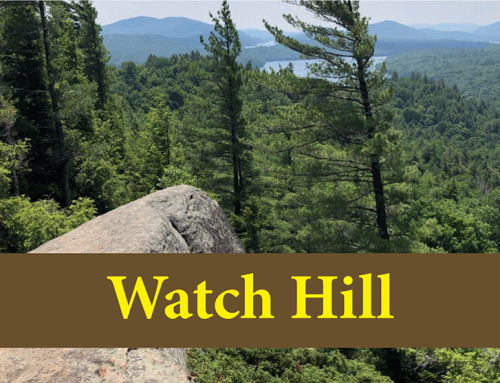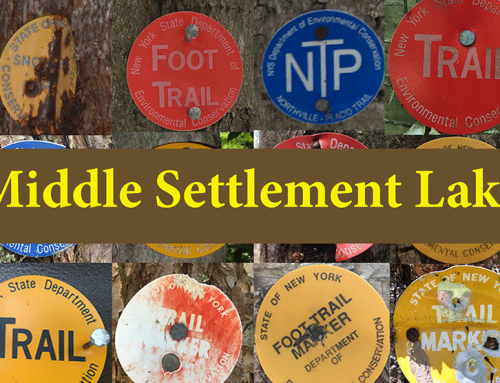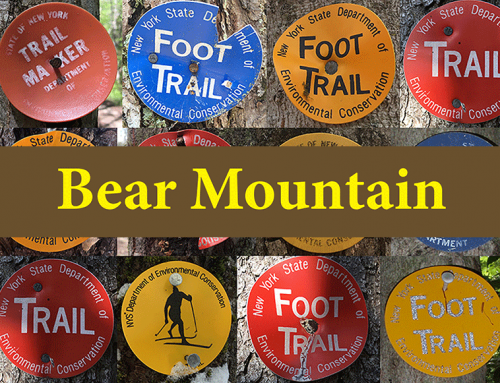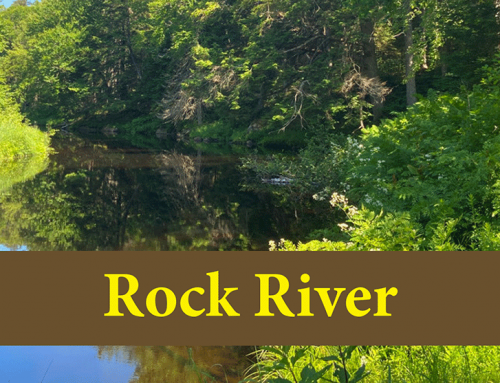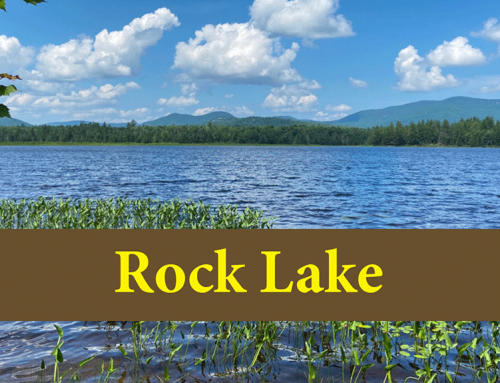Snowy Mountain is a challenging 7.8 mile (round trip) hike alongside beautiful streams and through towering forests to reach a summit with a firetower that provides sweeping 360-degree views of the central Adirondacks.
Snowy Mountain
3.9 mile (7.8 miles round-trip)
Indian Lake, Hamilton County
Central Adirondacks
Hiking, snowshoeing
Level of Difficulty: Challenging
Hike Up Snowy Mountain
The Snowy Mountain trail is a 3.9-mile trail between Indian Lake and Speculator. The trail runs mainly through Forest Preserve Lands of the West Canada Lake Wilderness and Jessup River Wild Forest, but cuts through sections of the Township 33 Conservation Easement lands. There is a roadside parking on the east side of State Route 30, seven miles south of downtown Indian Lake. The majority of the hike winds gently through a beautiful mixed northern hardwood forest before the trail grows steep and rocky as it gains elevation rapidly over the last mile. The trail crosses and runs alongside several lively streams and rocky cliffs before reaching the Snowy Mountain Firetower and rocky summit.
The Snowy Mountain Hiking Trail
The trailhead and trail register are located on the west side of Route 30, across from the parking lot. The first stretch of trail is narrow and well-marked with red trail markers nailed to trees and runs through several huge hemlocks and white pines. Soon the trail runs over a series of boardwalks before leading down to the first creek crossing over a stepping stone bridge. The trail then weaves up toward a small pine needle-covered clearing on the right that provides a view of the valley and forests below.
After dropping down again to a larger stream crossing, the trail begins a steeper climb. Roots and logs provide footholds for hikers as the path rises steadily. The trail then flattens out for a stretch and leads to a wide, slow-moving stream that opens the forest to the sun. The long log bridge over the stream offers the perfect spot to take in the scenery. The trail runs over more boardwalks before crossing another bridge onto a beautiful ridge with large streams on both sides. This area is beautiful with lots of mossy boulders and shade.
The trail then turns right and runs alongside one of the streams for about half a mile before beginning the hike’s steep climb marked by two sets of stone staircases. The path is very eroded and rocky over much of this segment. After a steady and steep climb, large mossy cliffs begin to emerge from the spruce forest on the right as the trail runs through a few sunny clearings. The summit of Snowy Mountain is visible in the distance. The trail then becomes significantly steeper and rockier over the hike’s most difficult terrain.
The Summit of Snowy Mountain
Soon the trail rises up through tall rocky cliffs and leads onto a scenic overlook on the right side. While not the true summit, this area offers a beautiful wide view to the north and the best spot for lunch or rest on the hike. From this point, the trail runs through a pine forest for a few hundred feet to reach the firetower. The tower allows hikers to climb above the tree line for an unforgettable view of Indian Lake to the east and the surrounding forest.
The trek down the mountain follows the same route. Hikers should be careful over crumbly rocks on the steep stretches.
Click here to download a map and trail directions for Snowy Mountain.
When You Hike Make Sure to Practice “Leave No Trace” to be Prepared and to Protect the Forest Preserve
Please follow “carry in, carry out” rules for all trash and follow other Leave No Trace principles when hiking in the public Forest Preserve and other wild areas. The seven Leave No Trace principles are: 1) Plan ahead and prepare; 2) Stay on hiking trails and camp at designated areas; 3) Dispose of human waste and trash properly; 4) Leave what you find; 5) Minimize campfires; 6) Respect wildlife; 7) Respect other hikers.
Educated hikers do not damage the environment.
Prepared hikers do not need search and rescue unless injured.
Winter Use: Snowy Mountain is a popular mountain for snowshoeing in the winter.

